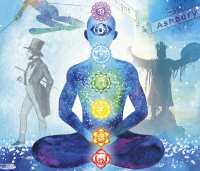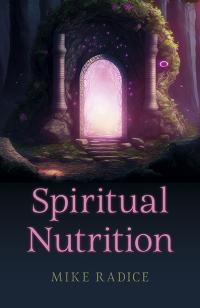
Poltergeists! Are the ‘Slumbering Giants’ of Paranormal Research about to Reawaken?
By John Fraser - Twitter@GhostFraser
Poltergeists! Are the ‘Slumbering Giants’ of Paranormal Research about to Reawaken?
According to Harry Price the legendary paranormal researcher in his book ‘Poltergeist over England’ (1939)
“A Poltergeist is an alleged ghost, elemental, entity, agency, secondary personality… spirit imp or familiar with certain unpleasant characteristics … mischievous destructive noisy, cruel, erratic, thievish … spiteful, ruthless resourceful and vampiric”
In one of the best documented cases, that of the Enfield Poltergeist (1977), amongst many other things that happened:
Marbles flew through the air and landed on the floor without rolling
Doors and drawers opened of their own accord
Objects such as teaspoons, a card board box, even a fish tank lid jumped of their own accord.
Raps and bangs were made in a way that showed apparent intelligence.
It sounds that the Poltergeist can and should play the ‘lead role’ in any serious paranormal investigation, (and certainly tends to in any modern paranormal horror movie), strangely though the opposite seems to be the case!
It has been estimated that by 2006 there were 1,200 groups involved in paranormal research, the vast majority of those groups would define themselves as being of the ‘Ghost Hunting’ type. Such research has largely become spending the night in an old creepy house looking for small changes in temperature, Electromagnetic (EMF) readings or seeing something strange from the corner of the eye.
However if an EMF meter blips or you saw a shadowy figure for a second or two at 4AM in the morning, spaced out with coffee and lack of sleep what does it actually prove- the power of the paranormal or the strange powers of a double espresso?
This new found direction has been encouraged by TV series of varying quality... be it Ghost Hunters Ghost Adventurers , ‘Haunted’ , ‘Most Haunted’ or even ‘Help My House is Haunted’. Each title seeming to be trying to outdo each other, and most of whom have disclaimers for being for entertainment purposes only!
Perhaps it could be called a strange phenomenon in itself that during all this period only fleeting reference has been made to poltergeist phenomena, which on the whole has been treated like a rather annoying relative, largely uninvited to the new paranormal extravaganza. Since Colin Wilson’s best seller ‘ Poltergeist- A Classic Study In destructive Haunting’ was published in 1981, whilst there have been some books published on one-off poltergeist incidents , there have been few if any published about the subject itself .
In some ways this has not been a bad thing as the people-centred nature of poltergeist phenomena certainly challenges an amateur investigator with ethical questions that are not so important in a plain old often uninhabited haunted house. Is it possible though this lack of current interest though could actually be holding back in discovering the truth (or otherwise) in the paranormal itself?
Most experiences of ghosts have alternative and ( if we’re being honest) plausible psychological expectations from ‘ Confirmation Bias’ (interpretation of evidence as confirmation of one’s existing beliefs) to ‘ Top Down Processing’ (Picking up false perceptions in the brain’s search for meaning – such as a passing shadow appearing to the brain as a dark hooded figure) . However as poltergeists throw things and move things and make loud recordable bangs, there comes a point when any psychological theory seems silly in providing an explanation for that. If an object is in one place and then moved or was thrown to another without explanation, it seems much more of a case of being ‘Fact’ or ‘Fraud’. Either there was some trickery involved or it was something truly weird and unexplained – which is in essence what the paranormal actually is.
Why has such powerful phenomena been so long neglected? One of the clues might be on the web site of the Society for Psychical Research, where it is stated in its PSI Encyclopaedia that:
“Poltergeist activity is very rare, and often lasts only a few days or weeks”.
That, to be fair, is most people’s perception – real live cases such as the Enfield case or The Black Monk of Pontefract’, (another ordinary council house where a poltergeist threw a grandfather clock down the stairs) are akin to winning the paranormal investigation ‘National Lottery Jackpot’.
Perhaps though most Paranormal Investigators are suffering from an understandable case of their own ‘Confirmation Bias’?
Certainly Poltergeists have just as long a history as Ghosts Rudolph of Fulda a German Benedictine Monk is recorded as communicating with a rapping poltergeists as early as 858CE. There are cases throughout history such as the Tedworth Drummer, 1661 UK, and The Bell Witch (Poltergeist) Tennessee, USA 1817. With a little bit of Research I actually found a case literally across the Street from where I live. The famous at the time but now largely forgotten ‘ Thornton Heath ‘ Poltergeist of the London suburbs that was renowned for nearly crushing a newspaper reporter with a falling wardrobe, while barely a mile down the was another famous case – that in the (now demolished)‘Kings Cellars’ bar which was investigated by Wilson amongst others .
But perhaps here we are only starting to scratch the surface of the phenomena. Perhaps that ‘annoying relative’ of ghosts could be a very close relative indeed – possibly even something close to being a sibling. The paranormal researchers Alan Guald and Tony Cornell found a significant overlap of ghost and poltergeist phenomena in an exhaustive study involving 500 cases. A more modern example of this is ‘The Cage’ and old house in St Osyth, Essex which started with apparitions appearing to the owner Vanessa Mitchel but where flying objects and scratch marks on people’s skin was to be the dominant factors later.
This overlap could be much more significant when it becomes apparent that many non poltergeist ‘Hauntings’ are based on the folklore of old buildings and places with very little recent evidence indeed. Does for example the ghost of Dame Dorothy Selby really haunt the magnificent manor of Igtham Mote? Legend has it she was bricked up there for betraying the ‘Gun Powder’ plot to blow up parliament in 1605 - reality states she has a large Mausoleum at St Peter’s Church Igtham where she was buried in 1641- a ghost story about a ghost which couldn’t exist.
Does the ghost ship Lady Lovibond really sail every 50 years after being wrecked, all lives lost, on the notorious Goodwin Sands Kent in 1747 . The fact is that there was no report in Lloyds List of wrecks at the time. The fact is that the associated tale is a logically impossible one-that of the ‘First Mate ‘running the boat aground because of a jealous love he had for a newly wed bride -for If all lives were lost who passed the initial tale down? This did not stop hundreds of paranormal investigators attending the scene at the 1997 50 year anniversary with predictably no results. Take away cases of legend and romantic whimsy and poltergeist phenomena in an actual active ‘haunting’ might be very common indeed?
It might also be possi0ble that many poltergeist cases are misreported as when strange things happen there is a tendency for people to report things within their own familiar folklore. Tales of Duande or Goblins have not been uncommon in the past in Latin America, except that these mischievous Duande have a familiar ‘Poltergeist’ habit of throwing things around, but (for) the want of common terminology would fall outside the radar of a serious paranormal researcher.
A little bit more familiar to us is the Strigoi of Romania or the Vrykolakas of Greece that multi named entity common in the Slavic states of Eastern Europe and more familiarly termed by us in the West as the Vampire. This has been given a wonderfully kitsch Gothic appearance by the author Bram Stoker in his novel ' Dracula’, which helps make many of us assume it to be a totally fictitious beast. However, as Richard Sugg of Durham University has argued, incidents reported as vampire ones in countries that accept the concept have a strange familiar ring … lots of noises, movements of objects , and scaring the poor victims witless . Once the cultural concepts are unravelled, the poltergeist seems to be a well travelled entity for sure. Harry Price was once ridiculed for investigating an entity that was identified as a ‘Talking Mongoose ‘, who played noisy pranks on a 14 year old girl in a remote cottage at Cashens Gap, Isle of Man. In the context of ‘Poltergeist Goblins’ and @Poltergeist Vampires’ a ‘Poltergeist Mongoose’ starts to seem somewhat feasible’ possibly even somewhat ‘mundane’.
If that wasn’t enough to convince the reader of the potential common nature of the poltergeist it might also be possible that many cases are not reported at all. Incidents that whilst both disconcerting and unexplained are not dynamic or powerful enough to prompt any ‘experts’ to be contacted. Most of us have experienced cases where a valued object has simply disappeared, to be found again either back in the same place or somewhere else where it would have been inconceivable to have put it. Most of us simply shrug our shoulders and get on with our busy lives, and say it was ‘Just One of Those Things’, but this is also ‘one of those things’ which is so very common in an more obvious poltergeist case, so could it not also be possible that so much low level poltergeist activity just gets shrugged off and what is reported is simply the tip of the iceberg.
Perhaps then it’s time for a change in the way that we try to investigate and prove the paranormal? Are we using too much equipment to try to detect small changes that may or may not have meaning in a so called haunted house, and in doing so are we missing the (poltergeist) ‘Elephant in the room’?
It may be still for debate as to whether poltergeist phenomena are common or rare or possibly nonexistent- what I don’t think is up for debate is that, for all the reasons given research into and publications on the subject are definitely far too rare. Surely 39 years after Colin Wilsons influential and bestselling book, it should be time to revisit the subject and help advance that debate again?
So let the debate commence!
READ:
Poltergeist! A New Investigation Into Destructive Haunting
TODAY!
WOULD YOU READ A BOOK THAT IS HAUNTED?
COMING SOON FROM 6TH BOOKS
Categories:
0 comments on this article

















